COVID-19 induced restrictions may affect demand and supply chains thereby impacting sales.
Steel demand is also affected by trade barriers and protectionist policies. Fast-paced technological changes and shifting customer preferences may necessitate adoption of newer grades of steel and/or alternate materials.

Mitigation strategies
As domestic steel demand plunged due to COVID-19 induced lockdowns in Q1FY2021, sales were diverted for exports. New international markets were explored which provided better net realisations. Support was provided to distributors impacted by liquidity crunch. To support the fight against the pandemic, we designed and launched isolation and quarantine units using Nest-In and NMB solutions. During the lockdown, focus was on generating and conserving cash for exigencies.
The implementation of unlock measures in June 2020, resulted in faster than expected recovery for steel-intensive sectors. Initially the focus was on sales in non-containment zones and subsequently in improving domestic availability by reducing exports. With the improvement in demand for steel globally, the realisations improved sharply. We remain vigilant of the evolving pandemic situation and its impact on steel-intensive sectors.
In our endeavour to enhance footprint in India, we have built a diversified portfolio of product offerings for customers from a range of industries to counter slowdown in any one sector, region or segment. Dedicated marketing and sales teams service customers and build deep customer engagement by customising products, improving reliability and providing value added services. Tata Steel has invested in building a strong marketing franchise with wellregarded brands and a large network of dealers and retailers across the country. This helps in increasing the stickiness of sales and reducing the exposure to business cycles. It has also built distribution channels internationally to enable exports as and when desired.
Steel is a cyclical industry and the only way to beat this cyclicality is by offering solutions. We have forayed into ready-to-use steel for construction industry and introduced products such as steel doors and windows, furniture to enhance our retail customer base. Sustainable solutions (coated products) such as GalvaRoS and Colornova and customised solutions for the agriculture sector like Agronest have been introduced. We are also diversifying our product offering beyond steel by introducing new materials like composites, Fibre Reinforced Products, etc.
Strategic linkage
SO1 Leadership in India
SO3 Attain leadership position in adjacent businesses
Capitals impacted
Financial capital
Manufactured capital
Financial capital
Raw materials (mainly coal and iron ore) are a significant contributor to the input cost in steelmaking. These commodities have global supply chains and their prices get impacted by various factors such as dynamic geopolitical landscape, supply-demand imbalance, weather patterns, policy interventions by governments in key sourcing/ consuming countries (especially China), etc. Our profitability can get significantly impacted due to the volatility in raw material prices.
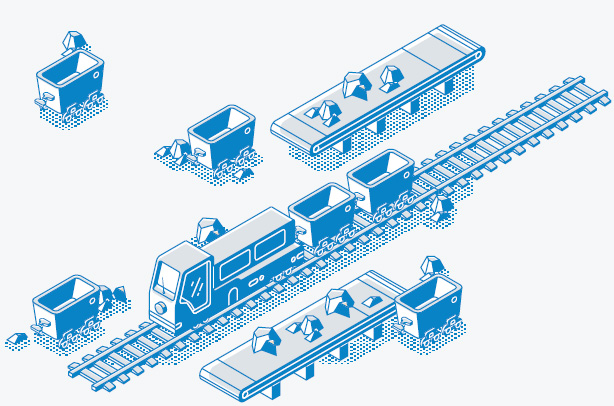
Mitigation strategies
There is a significant co-relation between raw material and steel prices (sometimes with a lag). The balance risk is addressed through matching the sales tenure with the procurement tenure (e.g. annual fixed price steel contract to have an underlying fixed price iron ore) either through physical contracts or through use of hedging instruments. We have also developed a predictive analytics tool to have advance information on price direction so as to optimise buying decisions. The captive/domestic raw materials provide another avenue to guard against volatility as they have relatively stable cost/price.
Tata Steel has undertaken risk assessment to assess the capability of key vendors. We proactively engage on assessing the risk of single geography sourcing and mitigations have been put in place to diversify sourcing and/ or find alternate materials.
Strategic linkage
SO1 Leadership in India
SO2 Consolidate position as global cost leader
Capitals impacted
Financial capital
Manufactured capital
We operate across multiple manufacturing locations and are subject to various stringent safety laws and regulations. Non-adherence to process and workforce safety requirements, safety laws and regulations may impact business continuity and reputation.
COVID-19 contagion poses risk to workforce health and safety, and may lead to business disruptions.
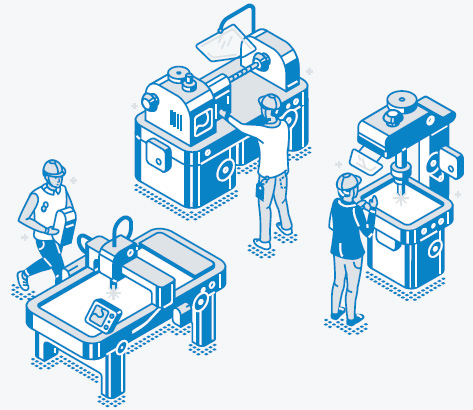
Mitigation strategies
We have created a strong safety governance structure and established a robust safety management system. Business Continuity Management process is institutionalised through the development of Tactical Centre for response to any major onsite emergency. The Process Safety, Centre of Excellence approach has been deployed for standardised implementation of Process Safety Framework in all high hazard processes. Safety trainings are conducted to meet the requirements of employees, contractors and other relevant stakeholders as a part of safety competency and capability enhancement initiative.
We leverage our digital ecosystem to manage the health and safety aspects arising due to the pandemic whilst ensuring business continuity. Setting up of an empowered committee of the Senior Leadership Team to tackle the COVID-19 pandemic facilitated agile decision-making and quick deployment of organisation-wide initiatives. An in-house developed prediction model is being used to predict manpower availability for up to 30 days, based on trend of COVID-19 positive cases and recoveries. Digital COVID-19 dashboard is in use to provide real-time information on COVID-19 profile of workforce, across locations. Video analytics has been leveraged to sense crowding. AI-based ‘face mask detection’ has been introduced within plant premises. Digital COVID-19 safety applications such as contact tracing, Suraksha scanners, and containment management have been developed. Standard operating procedures, relevant during and post COVID-19 operating environment, have been developed and disseminated across the organisation. Adherence to these is being implemented and monitored vigilantly to ensure safe workplace.
Safety Reward & Recognition has been introduced to motivate employees towards positive safety behaviour. Safety is key to our business operations and is a core business result for all employees in their performance management system.
Strategic linkage
SE Strategic enablers
Capitals impacted
Manufactured capital
Human capital
Steel industry is capital-intensive and maintenance of critical assets is vital. Conventional maintenance practices may be inadequate to deliver highest standards of equipment reliability leading to unplanned interruptions of operational processes.
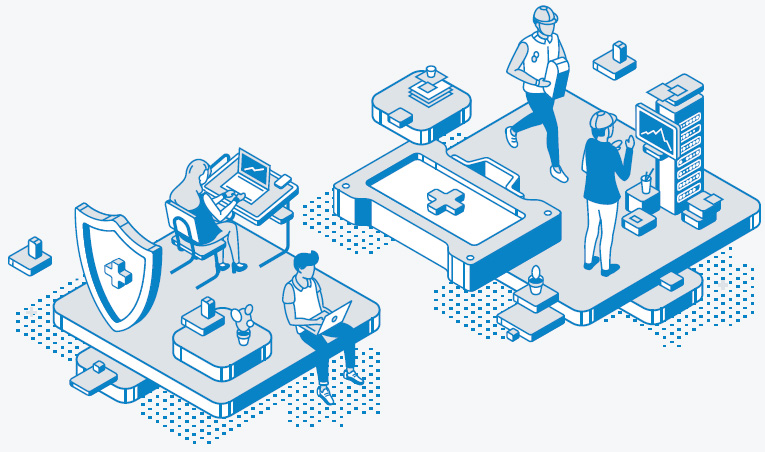
Mitigation strategies
With a dedicated team, Tata Steel focusses on formulation and execution of advanced maintenance practices to improve plant availability and reliability. We have developed Maintenance Technology Roadmap (MTR) for transitioning to Predictive Maintenance based regime. This will help to improve asset reliability across the steel value chain. Robust digital ecosystem, enabled leveraging data science and IoT for real-time shutdown management which was vital for ensuring optimal coordination during pandemic.
Recognition of Tata Steel's Jamshedpur and Kalinganagar units as ‘Advanced 4th Industrial Revolution Lighthouse’ by World Economic Forum is a testimony to the effectiveness of the organisation’s investments in state-ofthe- art equipment and processes.
Digital initiatives are also being undertaken to optimise inventory and improve process efficiencies to achieve benchmark availability at optimal cost.
Focused drive towards indigenisation of spares has helped in self-reliance and is also aligned to ‘Make-in-India’ concept. Accordingly, several vendor partners are being developed to supply world-class quality spares with minimum lead time.
We remain vigilant of the evolving pandemic situation and have taken several measures towards employee health and safety while ensuring continuity of business operations.
Strategic linkage
SO1 Leadership in India
Capitals impacted
Financial capital
Manufactured capital
Natural capital
The supply chain network is subjected to physical and environmental destructions, trade restrictions due to geopolitical tensions and disruptions at suppliers. The developing rail, road, port infrastructure, handling facilities and dependence on outsourced partners may lead to disruption of operations.
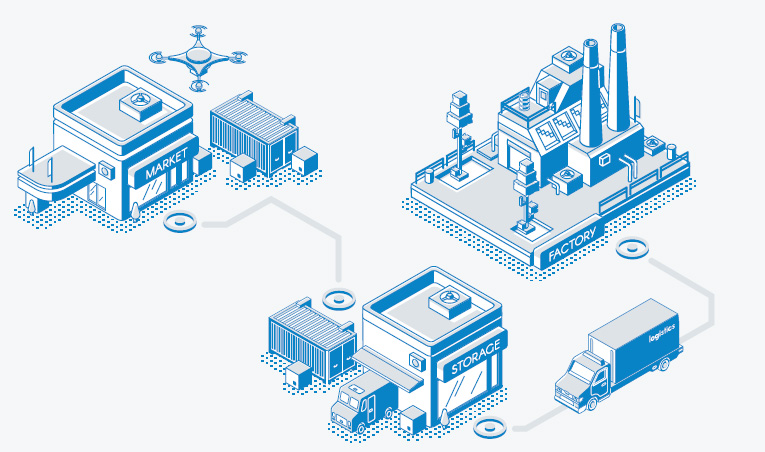
Mitigation strategies
Tata Steel has a dedicated team focussed on managing its supply chain. We are continuously working towards diversification in sourcing and expanding our vendor base from other geographies to manage supply chain disruptions. Tata Steel has partnered with ports, shipping companies and logistics service providers including Indian Railways and trucking companies. Measures like logistics network optimisation, improving operational capacity at loading/unloading points and upgradation of existing facilities are being undertaken. Tata Steel has invested in schemes like Special Freight Train Operator (SFTO) and General Purpose Wagon Investment Scheme (GPWIS) for inducting private rakes to improve reliability of its supply chain network.
We undertook several initiatives to mitigate supply chain disruption due to the pandemic. Licences were obtained to continue operations and minimise disruption in supply chain. Exposure of crew and ships to high-risk countries was being monitored to assess potential quarantine requirements.
Close coordination with railways, trucking operators and ports ensured smooth movement of raw materials and finished goods.
As domestic sales dropped, active management of shipping vessels and ports, portfolio expansion of ports used and alignment of production plans of mills with export schedules helped to accommodate higher export volumes.
We remain vigilant of the evolving pandemic situation as we closely monitor critical elements in our supply chain.
Strategic linkage
SO1 Leadership in India
SO2 Consolidate position as global cost leader
Capitals impacted
Financial capital
Manufactured capital
Tata Steel has a large debt portfolio and is exposed to volatility in financial markets which can impact the access to and cost of capital. We are also exposed to currency volatility given our import requirements, foreign currency debt as well as offshore operations. Concerns over climate change within international financial community can adversely affect credit appetite for the steel sector.
Lower than planned cashflow generation due to pandemic resurgence coupled with slow pace of vaccination may affect the targeted improvement in credit ratings.

Mitigation strategies
We are deleveraging through internal cash generation and monetisation of non-core assets. We have consciously diversified our sources of capital to tap alternate pools while exploring financing opportunities. We are continuously working towards increasing our debt maturity to provide additional flexibility to the business.
To counter the challenges posed by COVID-19, a cash war room was set up. Business decisions were pivoted to achieve cash neutrality in operations by reducing spend, managing working capital and reducing capital expenditures. Despite the challenges posed by COVID-19, we have been able to deleverage beyond the target set for the year. Capital allocation for margin expansionary growth projects in India has restarted within the contours of the targeted financial framework.
The progressive unlocking of economy has supported faster than expected recovery in steel and allied sector and a stronger cash flow position for us. However, we are keeping a close watch on pandemic resurgence as it may adversely affect the pace of economic recovery.
A dedicated team manages the currency exposure guided by the hedging policy and hedges exposure on a rolling basis.
We are focussed on reducing our carbon footprint and continue to improve our disclosure on sustainability performance through various disclosure platforms and publish sustainability KPIs in accordance with international reporting frameworks.
Strategic linkage
SO1 Leadership in India
SO2 Consolidate position as global cost leader
SO3 Attain leadership position in adjacent businesses
SO4 Leadership in sustainability
Capitals impacted
Financial capital
We focus on enhancing our digital footprint throughout the value chain, including our customers, suppliers and other stakeholders. Transition to remote working models and accelerated adoption of digital technologies has increased vulnerability to cyber-attacks. Non-compliance to IT legislations and regulations may lead to business disruption and imposition of penalties.
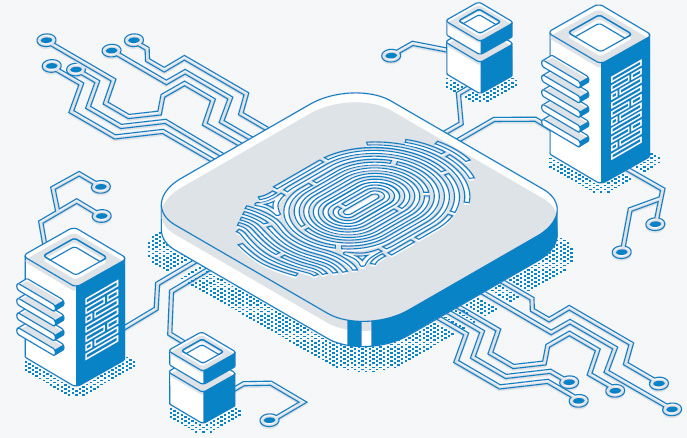
Mitigation strategies
Over the years, we have made several investments for digital transformation. SAP and other corporate systems which were On-Premise have been migrated to Cloud. We have a distributed Hybrid Multi Cloud Environment with SAP and other Corporate Applications on IBM cloud, Analytics applications on Google Cloud Platform (GCP) Data Visualisation Platform on AWS and Collaborations Platform on Azure. The Edge Computing systems like Mill Execution Systems (MES) are by design kept On-Premise.
Our Network Topology is a multi-layered and ring-fenced network architecture. We are also building capacity and resilience in network through migration to Softwaredefined Wide Area Network (SDWAN). The adoption of next-generation SOC controls and technologies has resulted in proactive detection of unwarranted system breach and timely mitigation of the same, ensuring business continuity. Significant efforts have been made to increase awareness amongst workforce with respect to cybersecurity. This ensured seamless migration of our work processes to remote working models across our locations during the pandemic. We also implemented Advanced
Threat Protection (ATP) for protecting from Phishing/Spam mails, Data Leak Prevention (DLP) over internet connections via cloud proxy and Work from Home (WFH) seamless and secure connectivity over zero. trust architecture. We have enacted various policies and procedures to ensure data privacy. Proactive software asset management to ensure compliance.
We have onboarded third parties for implementation of security safeguards and controls and subsequent identification of security deployment gaps.
Strategic linkage
SO1 Leadership in India
SO2 Consolidate position as global cost leader
SE Strategic enablers
Capitals impacted
Financial capital
Intellectual capital
Stringent climate laws and regulations for accelerating transition to a low-carbon economy, preventing loss of diversity, technology disruptions and shifting customer preferences to alternative materials may adversely impact profit margins. The pandemic has further accelerated megatrends like climate change and increasing customer preference for sustainable products.
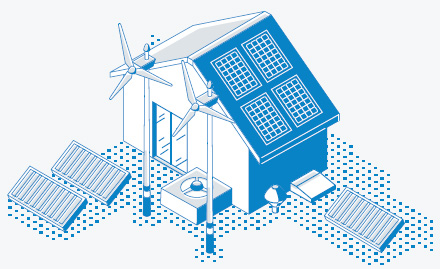
Mitigation strategies
Tata Steel has adopted the Task Force on Climate-related Financial Disclosures (TCFD) framework and strengthened the internal governance, disclosures and policy advocacy for transitioning to lower carbon regime of operations. Adoption of best available technologies for Waste Heat Recovery (WHR) such as Top Recovery Turbine (TRT), Coke Dry Quenching (CDQ), use of by-product gases in power generation and other energy efficiency initiatives have resulted in improving resource efficiency, as well as reducing carbon footprint. Over the last five years, there has been significant reduction in coke rates and dust emissions, along with 100% slag utilisation (‘Tata Aggreto’ and ‘Tata Nirman’ products developed for construction purpose), increase in scrap usage, focus on scrap recycling and zero water discharge.
Tata Steel has pioneered the steel recycling business in India, and a 0.5 MnTPA plant has been set up for processing scrap.
Carbon Capture and Use, maximising scrap usage etc.). Tata Steel has signed a strategic memorandum of understanding (MoU) with the Council of Scientific & Industrial Research (CSIR) to work towards accelerating development and deployment of CCU&S technologies in the steel industry. To reduce GHG emissions through increased use of renewable energy, Tata Steel had engaged with The Energy and Resources Institute (TERI) and is working on implementation of solar power plants across locations.
Biodiversity is an important pillar in our sustainability journey and several initiatives have been taken in FY 2020-21. Over 2.98 lakh saplings of native species have been planted across locations. Sir Dorabji Tata Biodiversity Park and Ecological Importance Park have been developed at West Bokaro and Jamshedpur, respectively. Rejuvenation of water bodies have been undertaken for biodiversity conservation and water conservation.
Life Cycle Assessment study has been undertaken for our products. Our offerings Tata Pravesh, GGBS and Tata Structura have received GreenPro certification.
As an outcome of our efforts, Tata Steel has been recognised as a ‘Sustainability Champion’ by Worldsteel for four consecutive years and received the Climate Action Programme (CAP) 2.0-degree Award in the Energy, Mining and Heavy Manufacturing Sector by CII Centre of Sustainable Development. It is now part of ResponsibleSteelTM, the industry’s first global multistakeholder standard and certification initiative that helps its members improve sustainability within the steel supply chain. Tata Steel Group has been rated 'A-' in the ‘Leadership Band’ on Climate Disclosure in CDP’s 2020 assessment. It has also been presented with several awards such as the CII-ITC Sustainability Award, IIM National Sustainability Award and CII 3R Awards 2020 for demonstrating Reduce, Reuse, Recycle principles in by-products management.
Strategic linkage
SO1 Leadership in India
SO2 Consolidate position as global cost leader
SO4 Leadership in sustainability
Capitals impacted
Financial capital
Manufactured capital
Social and Relationship capital
Natural capital
Our operations recognise a societal context shared with communities proximate to our locations and are guided by a co-created aspiration of significant and lasting betterment in the well-being of the region. This is fostered through continuous dialogue, understanding of vulnerabilities, recognition of aspirations and appreciation of cultural nuances leading to a relationship based on trust. A dilution in this approach will lead to an erosion of trust with communities, slowdown in societal impact and consequent loss of reputation or business continuity for us.
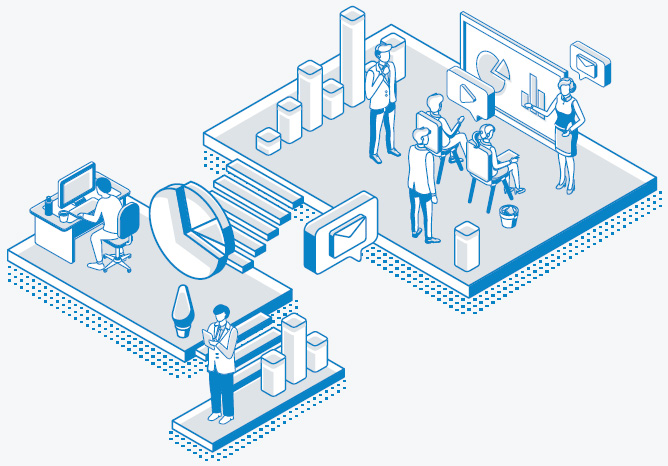
Mitigation strategies
Tata Steel anchors one of the deepest and most diverse societal development efforts based on a combination of programmes and platforms reaching more than 1.5 million lives directly every year. The impact programmes are crafted as replicable change models on themes such as education, public health, tribal identity, livelihoods, agriculture, water, disability, etc., which are based on a contemporary understanding of core development challenges of the region and closely aligned to the Sustainable Development Goals 2030 agenda. The impact ambitions are predicated on platforms for continuous dialogue across communities, with emphasis on marginalised and vulnerable groups, to create a shared agenda for the impacts to be felt by those who need them the most. These have yielded significant long-term results like more than 1,200 habitations being declared child labour free zones and 40% decline in maternal and child mortality rates in the last few years, while curating positive social capital and effective leadership amongst communities. We have a portfolio of products which is aimed at addressing societal challenges like low-cost housing, farm income enhancement while key business processes are also designed to have a clear diversity and affirmative action perspective.
This depth was particularly evident during the pandemic, where we collaborated with communities to implement a 10-point #CombatCovid19 programme which (a) addressed the information and awareness gap, (b) met deficits in essential supplies and (c) created robust systems to last beyond the lockdown. Our efforts have been recognised across national and global platforms including Government of India, Dun & Bradstreet, Confederation of Indian Industry and BRICS Business Council.
Strategic linkage
SE Strategic enablers
Capitals impacted
Manufactured capital
Social and Relationship capital
Our operations are governed by various statutes encompassing law and regulations for environment and climate change, trade measures, competition, taxes, mining and others. Any deviation in compliance and adherence has the potential to not only impact our operating performance but also dent our reputation. The continuously evolving regulatory scenario, resulting in changes of the statutory provisions and introduction of newer ones, make compliance more complex.

Mitigation strategies
We are continuously scanning the regulatory canvas to understand the changing statutes and their implications, along with closely monitoring restrictive trade policies globally, that could influence our procurement decisions and market footprint, to protect and generate business value. Policy Advocacy is being done to highlight the concerns of the industry on a continuous basis along with suggestions for a more practical policy regime.
We are committed to complying with existing laws and regulations and have a policy of zero tolerance to non-compliance which is an integral part of our culture and operating philosophy.
We have invested in systems and processes to drive compliance across the organisation. Employees are regularly sensitised about the need to comply and educated about the compliance requirements of the role.
Technology has been deployed to track the compliance within the required timeframe, with suitable escalations and reviews. Investments needed to comply with regulatory requirements are prioritised within the capital expenditure approval framework.
Strategic linkage
SO1 Leadership in India
SO2 Consolidate position as global cost leader
SO3 Attain leadership position in adjacent businesses
SO4 Leadership in sustainability
Capitals impacted
Financial capital
Manufactured capital
Social and Relationship capital
Natural capital